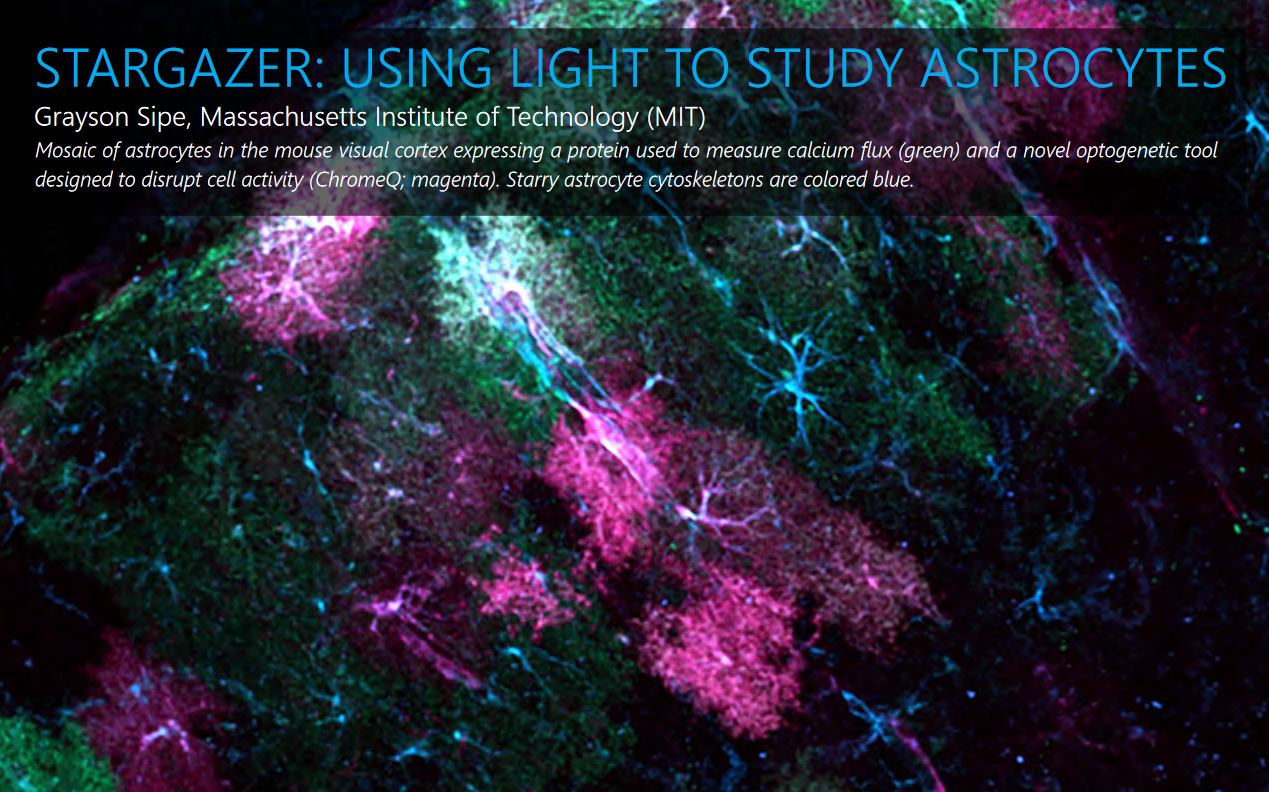An image from Grayson Sipe, PhD of the Sur Lab has been featured as part of The BRAIN Initiative’s 2021 Calendar for the month of April!
Check out the full calendar and read more about Grayson’s images and the other featured images here!
[ Source: The BRAIN Initiative | November, 2020 ]
“Astrocytes represent a substantial cellular population in the brain, and yet we have a minimal understanding of what they do,” says Grayson Sipe, Ph.D., a postdoc at MIT and the artist behind this picture. Dr. Sipe’s photo was made possible by a BRAIN Initiative grant focused on inventing tools to study how astrocytes influence neuronal circuits in the cortex during visual and motor learning.
Dr. Sipe and his collaborators have developed novel tools to illuminate how these cosmic cells influence neural circuits. The green patches in his image are astrocytes genetically engineered to light up in response to calcium fluxes that flow through the cells, which may be triggered (or set off) by the activity of neurons and other cell types. By peering through a tiny glass window placed above the brain’s surface, Dr. Sipe can watch this activity in real time as mice are shown steady streams of visual stimuli. Magenta represents astrocytes filled with ChromeQ, a new genetically modified protein designed to disrupt (or “turn off”) astrocytes in response to light. By combining these two tools, he can simultaneously monitor and manipulate astrocyte activity as surrounding neural circuits process what a mouse sees.
“We now know that a single astrocyte can communicate with thousands of neuronal circuits and other cellular elements simultaneously,” says Dr. Sipe. “This suggests that the language of astrocytes in brain function is a complex and sophisticated convergence of many signals.”
We now know that a single astrocyte can communicate with thousands of circuits and cellular elements simultaneously. – Grayson Sipe, Massachusetts Institute of Technology (MIT)
Grayson Sipe earned his Ph.D. in Neurobiology from the University of Rochester in upstate New York. Currently, he is a postdoctoral fellow in Dr. Mirganka Sur’s lab at MIT. Learn more about his tool development projects by checking out the MIT Picower Institute for Learning and Memory news release featuring Grayson and Dr. Sur, or by connecting with him on Twitter (@gorsonsipe).
